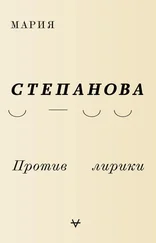Taglioni only came to Russia in 1837; the fairly unlikely story of the honorable highwayman is different in its original telling: instead of a panther skin spread over the snow there’s a carpet spread over the wet slush, and there is no mention of the ice cubes. The only “actuality,” to use Cornell’s word, is Cornell himself — and his ardent belief in the power of boxes and caskets. His many closed chambers could be brought together to form a doll’s house, filled with priest holes and secret rooms, “Suitcases,” “Soap Bubble Sets.” Or perhaps a doll’s town, complete with “Hotels” and “Observatories,” “Dovecotes,” “Pharmacies,” “Aviaries,” “Sand Fountains.” These are the titles of series, rather than individual works, consisting of many variations, each leading to the next, like a suite of rooms.
Cornell died on December 29, 1972, a year before his seventieth birthday. He would have enjoyed the date, placed in a celebratory box between Christmas and the New Year; he was born on Christmas Eve as well. He spent almost all his life in the same place, Utopia Parkway, 3708, in a modest suburban house, with his elderly mother and his disabled brother Robert. His studio was in the basement, where he kept tens of thousands of images and photocopies ready for future works, boxes of essential objects (“best white boxes — Empty,” “Plastic Shells new-1960”), files of notes and clippings. His strange passions made him a specialist in many niche areas, from ballet iconography to the history of silent film, and even experts would sometimes turn to him for advice. As he grew older he became increasingly impatient with collectors and tried to avoid selling his work or even exhibiting it. There was one sure way to get a hold of it, though — to visit him at home in the company of a young ballerina or starlet, and afterward buy up anything that the old man gave her as a gift.
After the death of his brother, Joseph Cornell often said that Robert had been the better artist — Robert (as an acerbic critic once noted) mostly drew mice, and was seriously into model railways. A sequence of works was dedicated to his memory, signed “Joseph and Robert Cornell.” The simple and rather sad mechanism, which stood behind this desire to bring the two names together, to make something together, was the main engine for Joseph’s very many activities, it was what made him tick. Robert Cornell, Taglioni, Gérard de Nerval, and many others, each in their own way, all demanded love, little temples to the embodiment of memory. These usually took the form of the little boxes: memorials to a meeting, drafts of a space where a conversation might take place.
Over long years of rummaging in antique shops, Cornell perfected his complex system of internal rhyme to the point where he could couple anything together with little or no effort. In this lay his sense of secret delight. He considered his teachers to be Mallarmé and Baudelaire: both were informed by a sense of the “correspondences” riddling the world with their countless ant trails, but in Cornell’s work this has the opposite effect. His objects learned a new obedience — each item considers for a moment, then lies down in its place and makes itself useful: all the objects became family. Every object has the chance to bask in the golden light of “being seen”; the wood shavings, the colored sand, and the cork balls exhibit a majesty and poise more befitting to ballerinas and poets. It seems as if the fact of future oblivion and decline was enough to make any object invaluable to Cornell. Every new work was constructed like Noah’s Ark, with the intention of preservation at its heart.
*
Anyone who lived in 1970s Russia will recognize in Cornell’s boxes the game of sekretiki or “little secrets” — the passion of my childhood. Nothing in the humdrum reality of this time could have explained the appearance of this game. Strictly speaking it was only a “game” in the sense that it had rules. Sekretiki wasn’t just any activity, it was a secret that you shared only with your closest friends and it was like no other game played in the street or at school. It was “underground” in the most direct sense of the word because the little secrets were kept under the ground, like treasure or dead bodies. In the country, where people were always bent over the land, planting seeds or digging out food, there would have been nothing special in this, but we were children of the city who knew the way home from school by the cracks in the pavement, and we had no relationship with the black and granular earth that every Spring gave the acacia and the lilac its freedom.
To make a “little secret” you had to drop down and press yourself against the earth. Choose a place, dig a little hole, look around and check no one is watching, put in the precious object, cover it with a piece of scrubbed-clean glass and then pour the earth back over, tamp it down so it looks untouched. Now I realize that these tiny tombs, lined with foil and filled with a tiny supply of all the beauty in the world were very like ancient burial chambers, with their assortment of objects ready for the immortal life. Very special things were chosen for the “little secret,” things that were few and far between: gold and silver paper, feathers, clippings from newspapers with a photograph of an actor or actress, precious beads or buttons, sometimes even tiny little dolls or figurines. The essential layer of glass turned the “little secret” into a shop window waiting for someone to come past and look in.
Like all buried treasure (X marks the spot), they weren’t very reliable hiding places, and you could more or less forget about ever seeing your trove again. Very few people knew about the burial place, two or three trusted friends. But a few days later, when you checked back under the bush there was nothing there. The “little secret” had disappeared as if it’d never existed. Either some boys, who had followed your movements with a predatory eye, had dug it up, or a rival had found it and buried it somewhere else. Or perhaps you’d simply forgotten where to dig (all your little remembered coordinates proving false friends). Sometimes it felt as if the sekretiki , like underground rivers, or seams of gold, lived according to their own instinct and could even move from place to place.
There was nothing much for the sekretiki above ground. The aesthetic system of Soviet life was thorough and in its own way convincing, but it adhered to an unspoken bias toward understated, decent, cheerful modesty, with no pretense to the gaudy or extravagant. Some insignificant departures from the norm were acceptable, as long as these were only small steps out of line: sentimentality, the soft focus of tenderness or grief as a response to understandable and general feelings, like yearning for lost youth or love for one’s children, or hope for something better. Anything suggesting equality or unity was acceptable, but eccentricity, standing out from the crowd without justification, was quite another thing. Anything that could be interpreted as outlandish behavior (even earrings in the ears of schoolgirls) was seen as an attempt to break through into a space labeled “unacceptable exclusivity” and that sort of thing — opulence, plumes and tails, silk stockings and sparklers — was in danger of destroying the general equilibrium and had to be kept at bay. Perhaps that is why it now feels to me as if the “little secrets,” filled with the “outlandish,” a concentration of the burlesque, forbidden beauty, crystal beads, cut out paper roses, became political refuges, crossing both state and other boundaries.
At various moments in history, in the villages and the rural hamlets of this vast country, people hid sawn-off shotguns and Grandfather’s revolver and even Tsarist gold coins. Nearer Moscow, in the gardens of summerhouses and allotments, anti-Soviet literature lay in the damp darkness — the seditious books and manuscripts that were too dangerous to keep even in the attic. Our apparently pointless little secret burials might have had a direct relationship with this history: we were hiding from chance view the beauty that was so lacking around us, and which we didn’t want to share with anyone in our sekretiki .
Читать дальше











